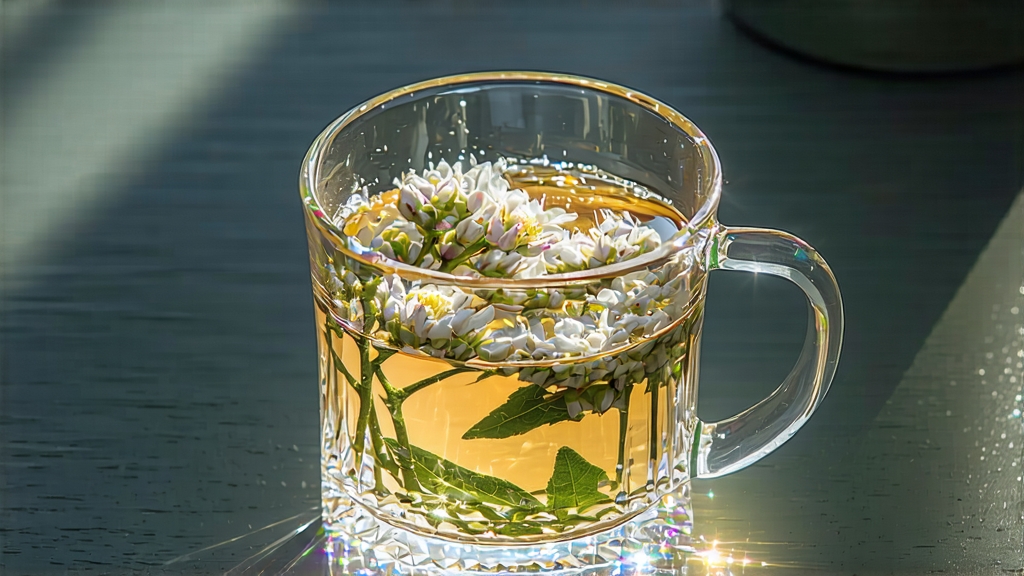
Among the six great families of Chinese tea, white tea is the most reticent, and within that reserved household White Hair Silver Needle (Bai Hao Yin Zhen) is the whispered legend. It is plucked only in the fleeting early-spring days when the tea bush awakens, still lacquered with night dew. Two tiny, perfectly closed buds—no leaf, no stem—are coaxed from each shoot by fingernails trained never to bruise. What follows is not the drama of rolling or roasting that black or oolong teas demand, but a slow surrender to air and time. The result is a liquor so pale it resembles moonlight caught in porcelain, yet so aromatic that poets have mistaken it for liquid orchards.
Historical roots
White tea’s documented history begins in the Song dynasty (960-1279), when the imperial court demanded “white tribute tea” pressed into cakes etched with dragon motifs. Those cakes, however, were made from wide leaves lightly steamed, not from the modern needle-shaped buds. The contemporary form of Yin Zhen emerged during the late Qing era in Fujian’s northeast, where poor transport links accidentally preserved the fragile buds: farmers simply dried them on bamboo trays while waiting for buyers who rarely came. When the buds finally reached coastal ports, foreign merchants were stunned by their silvery down and honeyed finish, and by 1891 White Hair Silver Needle had become one of China’s first teas sold abroad by its original Chinese name rather than the customary Anglicized labels.
Micro-terroir: Fuding vs. Zhenghe
Today the denomination “White Hair Silver Needle” is legally protected to two tiny counties—Fuding and Zhenghe—separated by a ridge of weathered granite. Fuding’s coastal air is salt-tinged and breezy; buds grown here acquire a marine minerality reminiscent of fresh oyster liquor. Zhenghe sits slightly higher and inland; cooler nights lengthen the withering phase, concentrating amino acids and giving a creamier body that Chinese tasters liken to “tofu water.” Purists can distinguish the two by the down color: Fuding needles glow silvery-white, whereas Zhenghe buds carry a bluish cast sometimes poetically called “frost on plum petals.”
Craft: the art of doing almost nothing
Picking begins when the morning air is still 18 °C and relative humidity hovers at 80 %. Only the “flag-and-bud” set is taken: the unopened bud standing upright like a miniature spear, flanked by the just-emerging first leaf which will be discarded later. Within thirty minutes the harvest is spread on water-woven bamboo trays, each tray tilted at 15° so that convection, not direct sun, does the work. For forty-eight to sixty hours the tea master merely watches; every two hours he shuffles the trays so that every bud meets the same breeze. If the weather turns sultry, he may slide the trays into a shaded corridor; if the north wind blows too fiercely, he lowers reed curtains. No machine, no fire—only the slow oxidation that hovers between 5 % and 10 %, low enough to keep the category “white,” yet high enough to transform grassy aldehydes into peach-lactones. When the bud’s moisture drops to 10 % it enters the “soft fire” stage: charcoal embers buried in ash release a gentle 40 °C warmth for twenty minutes, stabilizing the aroma without adding roast flavor. The finished tea retains 1.5 % residual moisture—just enough to keep the down plush and the enzymes dormant.
Grading the needles
Export-grade Silver Needle is sorted by three sensory metrics. First, the “three whites” rule: bud tip, bud shaft, and the tiny petiole scar must all be cloaked in down. Second, the snap test: a premium needle breaks with a glass-like “ting,” indicating complete drying; lower grades bend like soft plastic. Finally, the electrostatic check: when shaken in a plexiglass box, top lots lift like dandelion seeds, proving low dust content and intact trichomes.
Water, vessel, and leaf: brewing as meditation
Western recipes often over-handle this shy tea. The Chinese gongfu approach treats the buds as guests who speak softly: 3 g for 120 ml, 85 °C water, and a 30-second “awakening” rinse that is discarded not for cleanliness but to unfurl the bud’s memory of mountain mist. The first formal infusion lasts one minute; liquor should be the color of morning ch